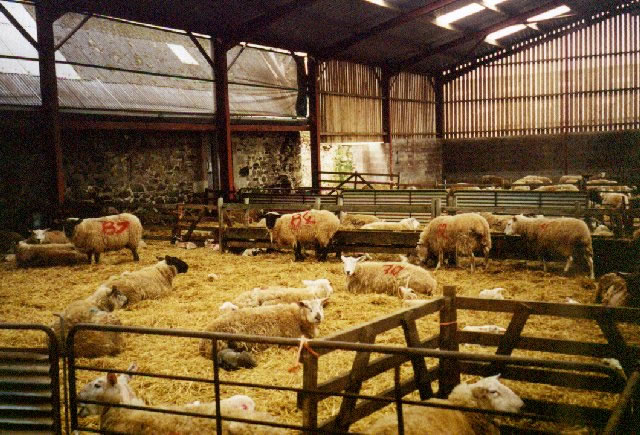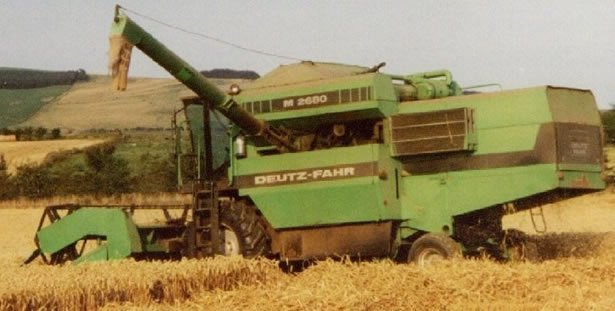

An Overview of the farming year on Horseley Farm
|
Spring: March, April, May Spring is often seen at the first season in the farming year, but in reality the work is so continuous that it is difficult to define any beginning or end to a year on the farm. All the same, spring brings with it new life in the form of lambs. Lambing starts at the beginning of March, with a few also being born in February. By this stage all the sheds are prepared for the new arrivals. All 1000 ewes lamb under cover in a system whereby they are kept in pens holding around 50 until the lambs are born and are then immediately transferred into an individual pen so that the mother can get to know her off-spring without any interference. Once they have been in this small pen for around one and a half days, they are then transferred to another shed where they are again put into a larger pen of around fifteen ewes until the lambs are strong enough to be transferred outside. This all happens over a period of two to three weeks from start to finish so is a very busy period.
Meanwhile, on the arable side, drilling around 200 acres of spring barley gets underway in early March and takes a few weeks, the barley is sown with a ‘combination drill’ where the land is both cultivated and the seeds sown in one pass with the tractor. Once the fields have been drilled the soil is firmed by rolling. Later at the end of March and the beginning of April, the grass has fertiliser applied so that there is enough growth for when the animals are put outside. There is then a lot of work in checking the animals and ensuring that they are fed properly. Kale is often also sown at this time of year to provide feed for the sheep in the early winter. Summer: June, July, August June brings with it the silage and hay season. Grass for silage is only given one cut and the silage is chopped while it is being baled before being wrapped in black plastic. Hay is cut a little after silage when the grass is a bit more mature. The grass is cut and then left to wilt for around five to seven days before being baled and stored inside. We try to move the grass as little as possible while it is wilting as this seems to help stop it rotting if the weather goes bad. June also brings sheep clipping. Regular weighing of lambs, weaning and fly treatments take place in July and August July is without doubt one of the quietest months of the year with most jobs up to date and only a few preparations for harvest needing to be made. Harvest starts in earnest around mid August for us, as we do not grow any winter barley or oilseed rape which matures earlier. Harvest usually continues until mid-September when all the cutting will have been done and all the straw baled.
Autumn: September, October, November The winter crops are drilled at the beginning of October so time is spent before this preparing the land by clearing the fields of straw and ploughing. It is only wheat that is drilled with us in the autumn although we used to also grow winter barley and oilseed rape which was sown in the autumn. After this flurry of work, things quieten down and it is mainly day-to-day tasks which need carried out such as feeding animals and checking that they are all alright. Winter: December, January, February Winter is by far the least liked season, it brings with it long dark nights, cold weather and difficult working conditions, although this is helped by the Christmas festivities! Most work involves preparing the sheds for sheep being brought inside at the beginning of January to be ready for lambing. Other tasks include general maintenance and the filling in of paper work, although this is a year long, never ending task. You would not believe the number of records which need kept and the number of forms which must be filled in!
Animals also need constant attention at this time of year as there is little food in the fields so they need to be fed with the baled hay, straw and silage. This takes us back to spring where the whole process of looking after the farm is repeated. |
|
|
![]()
![]()
©
WG & TF Davidson 2006. All rights reserved
Last
update:
22nd June 2006


